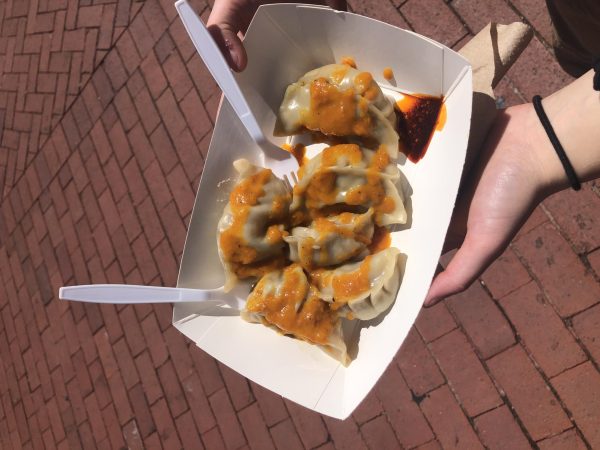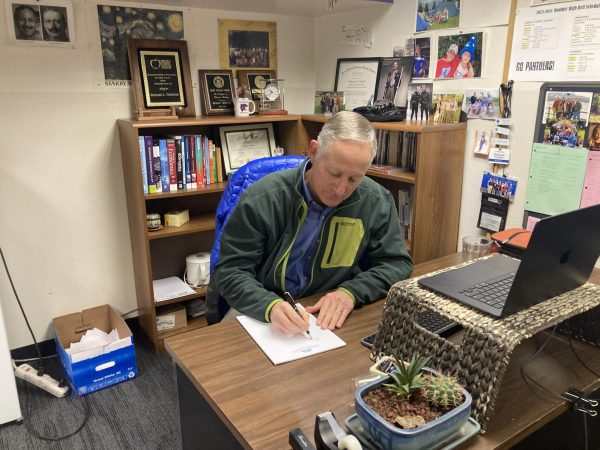A Deep Dive on Traffic
I-70 continually gets backed up on the weekdays from over-congestion and the tricky mountain turns increase braking.
Have you ever sat in traffic and wondered how it even happens? The usual answer to this question is that there are too many cars for the road’s capacity; however, the origins of traffic are much more complex than over-congestion.
Traffic can be created by a small bump in the road or maybe someone over-breaking through a turn. Mathematicians at MIT have used models to predict the impact of these small actions. In their studies, they found that any disturbance in the road can create a chain reaction. If a car goes over a bump there is a momentary reduction in the velocity. That one millisecond impacts all the cars behind. The first car may have to break because of that slowness, leading to the cars behind needing to break. The way traffic starts is from small actions that create a domino effect.
A solution to this problem is to drive farther apart. Experts recommend that when traffic is likely drivers should be half a car’s length away from the car in front, but this is not realistic when rush hour times are jammed packed with cars.
One solution specialists have looked into is self-driving cars. Although these ideas seem far reached at the moment, they may be the only concrete solution. Self-driving cars eliminate human error, such as the sudden braking a few feet before a bump, or over-breaking into a turn. Self-driving cars would be able to reduce speeds slowly to eliminate the domino effect, while also having the technology to predict where traffic-prone areas are and make decisions to create less traffic.
In Denver, another way to deal with traffic is already taking place. In partnership with Microsoft, a program called Smart City was launched in 2019. This program is used to decrease the amount of traffic in the Denver Metro area. All the vehicles are connected in the cloud, much like how cell phones are connected to one another. They then collect data from these vehicles, like the speed they are going or if the vehicle is experiencing congestion on the roads; this then helps the vehicle to make accurate predictions on the time it will take to get from point A to B and find alternate routes.
This technology plays an important role in public transportation, which is another solution to traffic; by using data that is always relevant by the second officials can alter public transportation schedules to reach the destination at the most efficient time. For example, a bus could leave Union Station at 9:30 am and need to go to Washington Park- at this time, it would take 17 minutes. However, if the bus leaves at 9:33 am, it may only take 14 minutes. When there is a continuous wave of data, AI systems can help public officials change the stoplights to reduce traffic and create more efficient public transportation routes.
When traffic is reduced it can decrease emissions made by vehicles, due to less time spent on the road. It also can help with trade between states and countries. When there is traffic on US highways it can prolong freight trucks’ time on the road. This creates a lag in trade and can also cost more for the supplier, which harms the national economy.
Traffic will never go away unless everyone can sprout wings and fly everywhere, but there are ideas that can hinder the severity of the traffic; because no one enjoys sitting in traffic for hours on end. Of course, walking and biking, when possible, are the least emission-producing and most traffic-free transportation options out there.







